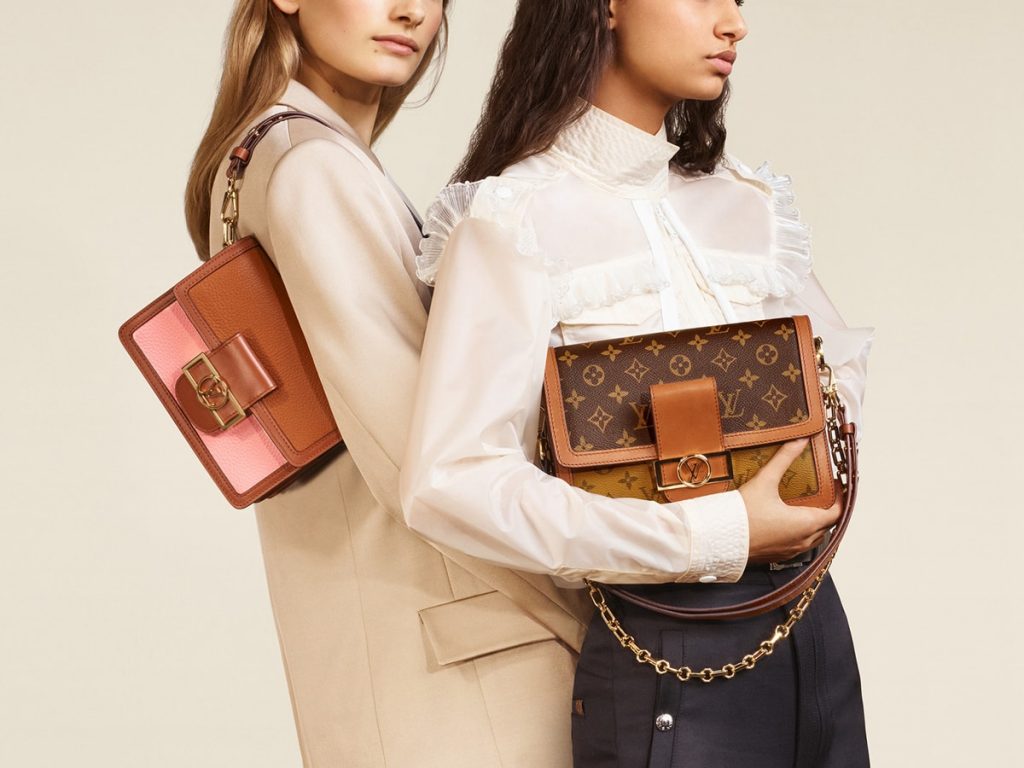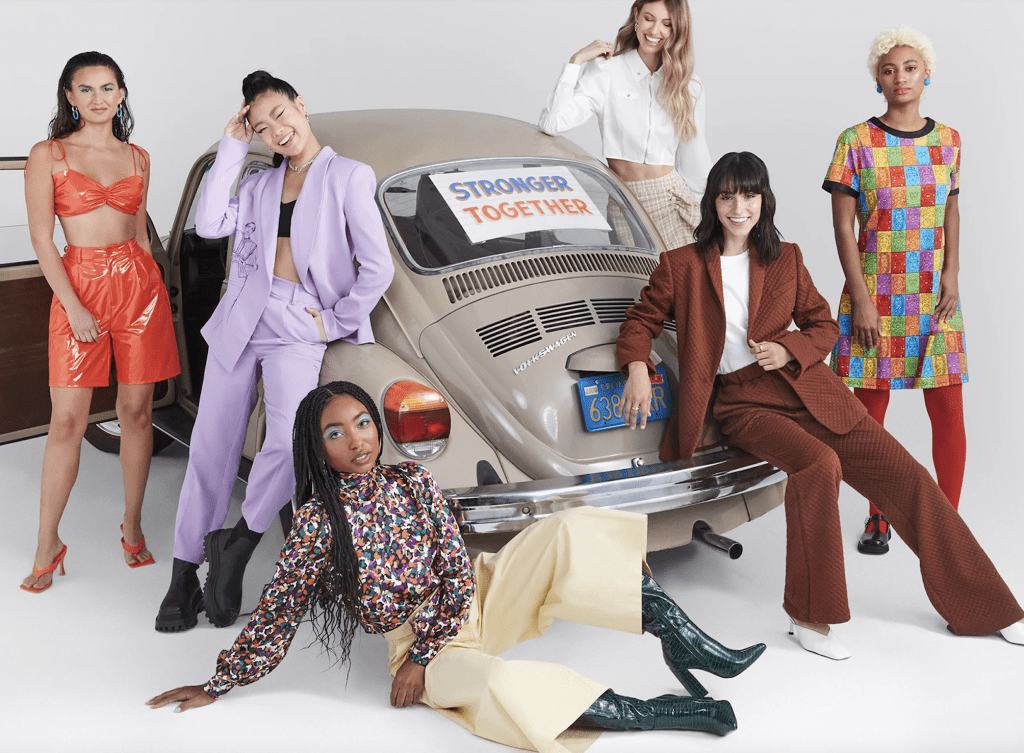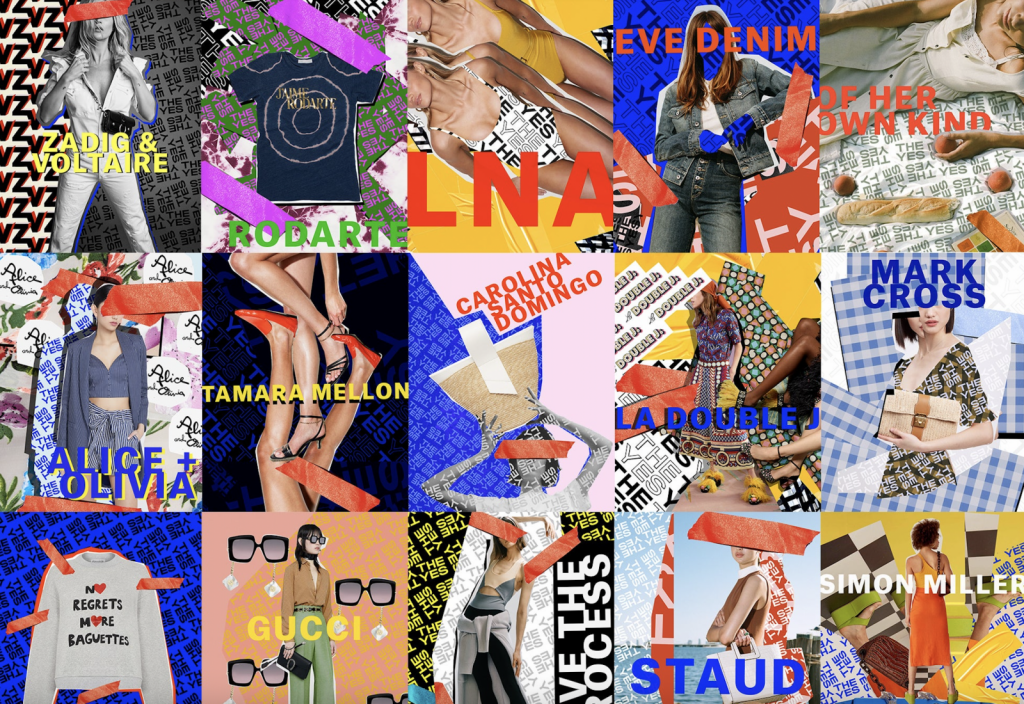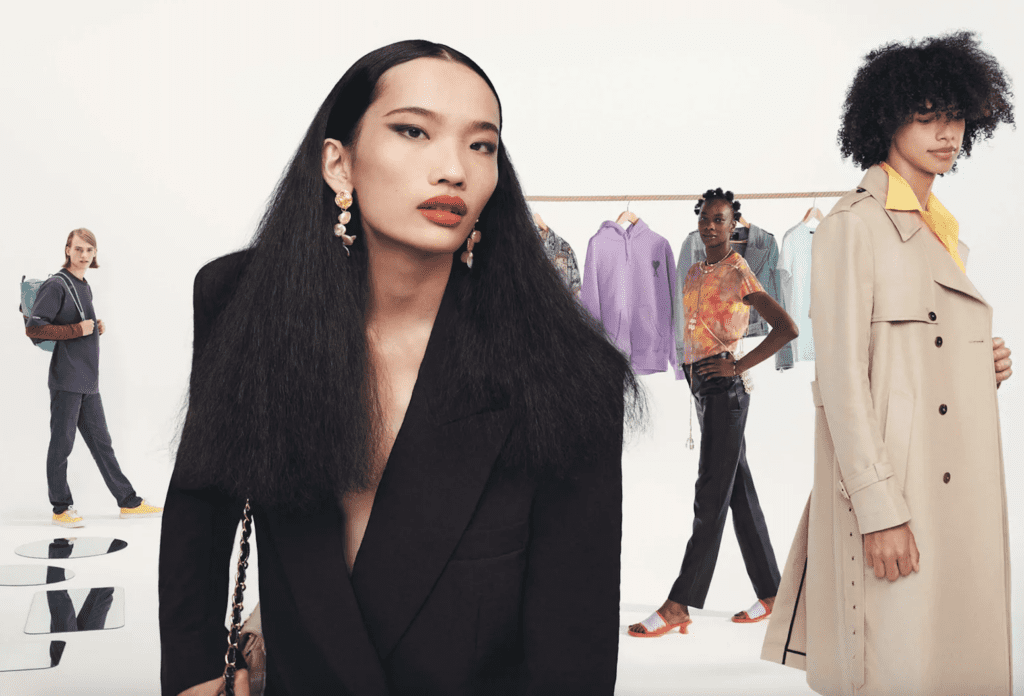Price increases went into effect for Louis Vuitton offerings on Wednesday, sending prices on certain handbags up by as much as 26 percent. Confirming the impending rises early this week, a representative for the French luxury goods brand, which currently holds the title of the largest in the world, said that “changes in production costs, raw materials, transportation, as well as inflation” were responsible for driving the hike in price tags. Meanwhile, last month, LVMH chairman Bernard Arnault stated that price increases were in the works, noting that the luxury goods group has room to increase prices of its luxury goods and “protect margins in an inflationary environment.”
Luxury brands – like Louis Vuitton – routinely use price increases to offset the effects of inflation and currency fluctuations (the latter of which is a key driver of global gray market sales), but there is likely more going on with the recent pricing plays than just protecting margins, in light of the fact that luxury groups, including Louis Vuitton owner LVMH, have touted “record levels of revenue and profitability.” LVMH recently reported that its Fashion & Leather Goods division – and the group as a whole – saw rising profitability in 2021, with its operating margin (i.e., the profit a company makes on a dollar of sales after paying for variable costs of production, such as wages and raw materials, but before paying interest or tax) for 2021 amounting to 26.7 percent, up 8 points compared to 2020 and up 5 points from 2019.
So, while Louis Vuitton and other similarly-situated companies are primarily “cit[ing] cost inflation for rises,” Neev Capital managing director Rahul Sharma stated on Wednesday that luxury’s record-high margins suggest that the newest price boosts for Louis Vuitton, at least, are also about “pricing power and creating scarcity,” echoing sentiments from UBS analysts this week. Not a novel point, the practice of luxury brands using price increases as a positioning tool as much as a weapon to offset inflation also seems to be guiding enduring price boosts for Chanel, which appears to angling to align its model more closely with that of Hermès, which maintains a relatively tight hold on – and enjoys cult-like demand for – its most coveted offerings, thanks to its pricing and careful distribution.
To be fair, costs are rising across the board for brands in the luxury segment and beyond. Federal Reserve Economic Data puts the cost of leather goods manufacturing for luggage, for instance, including suitcases, travel bags, backpacks, and other types of bags, on the up.
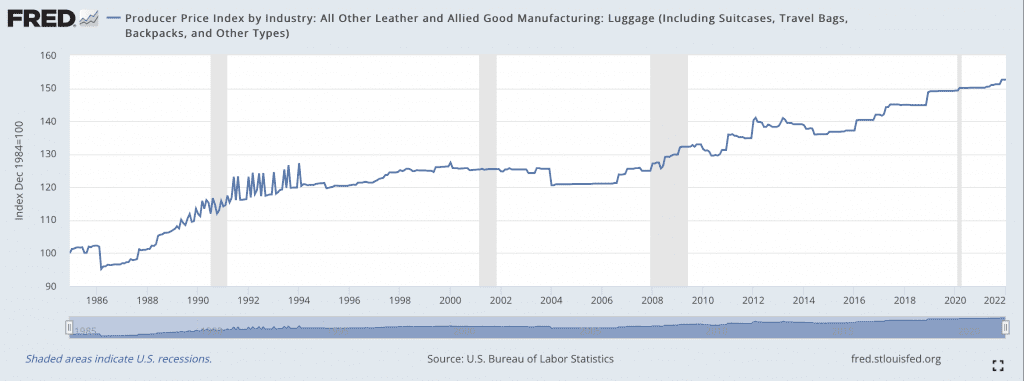
With rising costs in mind, brands that have not already raised prices will likely follow in Louis Vuitton’s lead. According to a note from Barclays analysts, Chanel, Dior, and Celine have already boosted prices, and Hermès is expected to follow suit to some extent (likely modestly). LVMH-owned watchmakers Tag Heuer and Hublot have indicated that they will raise prices come April, while Moncler, Prada, and Versace and Michael Kors owner Capri have also cited plans to boost their prices.
Beyond that, in reporting its 2021 revenues on Thursday, Kering’s management revealed that it would increase prices across its brands, following price increases for its big brands in 2021. (Gucci, for instance raised prices twice in 2021, and has more broadly been increasing the average prices of its offerings by way of the introduction of capsule collections, such as its Aria mashup with Balenciaga.)
Looking back to Louis Vuitton’s prices, again, one of the things that stands out more than the brand’s moves to maintain its record profitability and boost its positioning in the eyes of consumers (and thus, hold on to its “luxury” goodwill) is the enduring gap in price tags between its offerings in China and other markets. The company’s latest price increases “are consistent across different markets on most of the products,” and with “higher price increases [coming] in France, UK and the U.S. than in China for some of the entry-level monogram canvas bags,” Bernstein analyst Luca Solca stated in a note on Wednesday, but the China price gap remains.
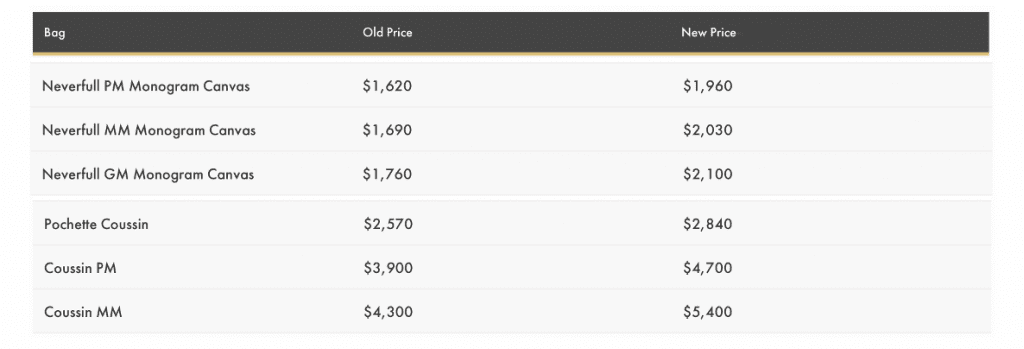
“Using France as base,” Bernstein found that on average, Louis Vuitton products in Mainland China are “37 percent more expensive, followed by 19 percent for the U.S. and 12 percent for UK.” In a few striking examples, Louis Vuitton’s Petite Malle bag is priced at €2,400 ($2,727) in France as of Wednesday’s increase and ¥44,500 ($7,022) in China, its OnTheGo GM bag sells for €2,000 ($2,273) in France and ¥24,500 ($3,866) in China, and its NÉONOÉ bag sells for €2,100 ($2,386) in France and ¥21,800 ($3,440) in China.
The enduring price differentials between China and other markets could lead to potential issues down the road, as Chinese consumers have significantly boosted their spending on the mainland versus internationally since the onset of the pandemic. To put the change in perspective: Chinese consumers spent $73.6 billion on luxury goods at home in 2021, up from almost $53.6 billion 2020 and $36.9 billion in 2019, and with a return to international travel not yet back on the table, this trend is expected to continue to play out.
It is difficult to imagine that brands will continue to be able to boast such striking price disparities between their home turf (and also the U.S. and UK), and the valuable Chinese market, particularly given the sheer value of – and their dependence on – the Chinese luxury consumer. After all, while China’s share of the global luxury goods market was about 32 percent in 2020, putting it behind the U.S., it is still on track to surpass the Western luxury titan to become the world’s largest market by 2025, according to both Bain and Euromonitor International. In reality, Bain analysts asserted last month that with its appetite for luxury goods and growing middle class, “China remains the best consumer story in the world.” The average increase of disposable income on the mainland “remains higher than inflation,” they note, making the stakes notably high even if Chinese consumers have taken the price hikes in stride to date and carried on spending.
As Beijing continues to crack down on everything from big tech and crypto to celebrities, gaming and wealth inequality, one question worth considering is whether – and when – it will take a hard stance on the consistently eye-watering mark-ups that are being served on Chinese consumers on the mainland by non-native luxury brands.




